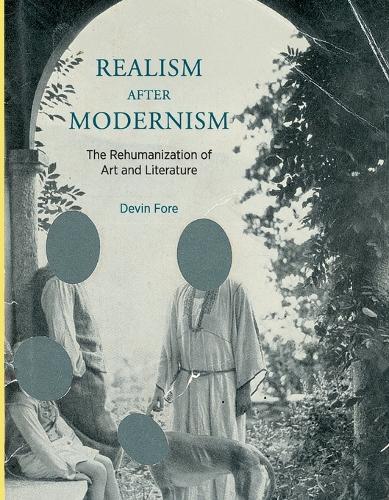
Realism after Modernism: The Rehumanization of Art and Literature
(Paperback)
Publishing Details
Realism after Modernism: The Rehumanization of Art and Literature
By (Author) Devin Fore
MIT Press Ltd
MIT Press
30th January 2015
United States
Classifications
Professional and Scholarly
Non Fiction
700.9430904
Winner of
Physical Properties
Paperback
416
Width 178mm, Height 229mm, Spine 19mm
Description
The paradox at the heart of the return to realism in the interwar years, as seen in work by Moholy-Nagy, Brecht, and others.The human figure made a spectacular return in visual art and literature in the 1920s. Following modernism's withdrawal, nonobjective painting gave way to realistic depictions of the body and experimental literary techniques were abandoned for novels with powerfully individuated characters. But the celebrated return of the human in the interwar years was not as straightforward as it may seem. In Realism after Modernism, Devin Fore challenges the widely accepted view that this period represented a return to traditional realist representation and its humanist postulates. Interwar realism, he argues, did not reinstate its nineteenth-century predecessor but invoked realism as a strategy of mimicry that anticipates postmodernist pastiche. Through close readings of a series of works by German artists and writers of the period, Fore investigates five artistic devices that were central to interwar realism. He analyzes Bauhaus polymath Laszl Moholy-Nagy's use of linear perspective; three industrial novels riven by the conflict between the temporality of capital and that of labor; Brecht's socialist realist plays, which explore new dramaturgical principles for depicting a collective subject; a memoir by Carl Einstein that oscillates between recollection and self-erasure; and the idiom of physiognomy in the photomontages of John Heartfield. Fore's readings reveal that each of these "rehumanized" works in fact calls into question the very categories of the human upon which realist figuration is based. Paradoxically, even as the human seemed to make a triumphal return in the culture of the interwar period, the definition of the human and the integrity of the body were becoming more tenuous than ever before. Interwar realism did not hearken back to earlier artistic modes but posited new and unfamiliar syntaxes of aesthetic encounter, revealing the emergence of a human subject quite unlike anything that had come before.
Reviews
Fore shows that if the 'new man' envisioned in the figurative practices of Weimar Germany might seem at the center of the universe, he is in fact a prosthetic man: He has become a mere organ of that universe, which is now fully one of techniques and media. Fore's conclusion resonates powerfully with our own historical status in the Internet age and indeed the interwar discourses he engages are finding surprising echoes in current anthropology and media studies.
Yve-Alain Bois, Artforum, "The Best Books of 2012"Author Bio
Devin Fore is Associate Professor in the Department of German at Princeton University.
